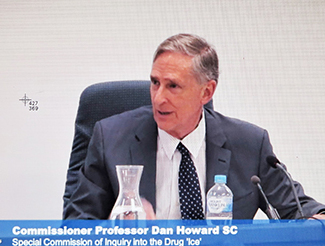Notably absent from the new New South Wales Government’s first Budget, given the pre-election promise to hold one, was a drug summit to consider how to address the apparently ever increasing consumption of illegal, and in the main, harmful, substances, not the least of them being crystal methamphetamine, a.k.a. “Ice”, a stimulant with a high risk of addiction if used regularly.
Easy to conceal and deal, but somewhat harder to kick, ice has been a drug of major concern for at least the past decade. Back in 2015, as we reported, the Australian Government was so concerned that it responded to a national “Ice Taskforce” by providing $300M to reduce demand and help the Primary Health Networks to boost drug (and alcohol) treatment services.
The then and current MP for Page, Kevin Hogan, welcomed the package, saying, ‘We cannot arrest our way out of this - it is much more than simply a law-and-order issue.’
Time moved on and so did the consumption of ice, along with efforts to combat it, both by arresting and educating.
In 2016, the North Coast PHN ran a series of roadshows to promote better understanding of the drug’s challenges amongst both the medical and general communities.
We covered this too, reporting that ‘a significant number of ice users engage in poly-drug use, notably cannabis and high levels of tobacco and alcohol consumption… between 25%-40% of regular users on the North Coast have experienced psychotic symptoms in the past month, according to Samantha Booker [PHN senior project officer, Substance Misuse Program], who said that while less than one-in-four users develops a dependency, the time to become addicted is much faster than either heroin or alcohol’.
Bleak news indeed, and seemingly enough to prompt action by the NSW Government, then headed by Gladys Berejiklian who in 2018 announced a Special Commission of Inquiry led by a distinguished lawyer who, in the years following the report’s release, would be slamming the NSW Government, first the Coalition and now Labor, for its inaction.
At the time we wrote how the well-informed body had sought input from a range of experts, including addiction counsellors, lawyers, police and ice (and other drug) users themselves.
Hearings were held in both metro and regional areas, including two days in Lismore, and a range of concerns were expressed about the impacts of ice (and other drugs, including alcohol) on anyone using it, especially lower socio-economic groups and First Nations people.
Commission chair, Professor Dan Howard SC, later slammed the government for its outright rejection of five of the 109 recommendations, notably pill testing at entertainment venues and enhanced safe injecting facilities, and its general go-slow on the rest.
This, he said, was a ‘shameful continuation of the longstanding drug policy vacuum in NSW’.
As the saying goes, plus ca change… the tradition of inaction, or perhaps political cowardice, has been inherited by the successor government, despite then opposition leader, now Premier, Chris Minns promising to hold an inquiry if elected.
Professor Howard has rejoined the fray, saying in late September, ‘It is astonishing that there is nothing in this budget for a drug summit, as this has long been a promised part of Labor’s platform.
‘The hardworking clinicians and NGOs that keep this sector afloat by their sheer devotion to their task, and especially those who struggle to access services, will be very disappointed and troubled by this omission, which can only mean further harmful delays and a shameful continuation of the longstanding drug policy vacuum in NSW.
‘The government’s apparent paralysis and refusal to move forward on this issue is stigmatising and traumatising to those who have been waiting so long for help.’
According to Legalise Cannabis MP, Jeremy Buckingham, the NSW Health Minister told him a summit had been allocated $1.8M and would be held before the end of the 2023-24 financial year. The Howard-led inquiry cost more than $10M and was widely praised for its thoroughness.
A great deal of effort and money could be saved by revisiting that earlier report. Should the new regime have trouble finding it on the shelf, they can go to this NSW Government website where it sits ready, willing and able to serve the purpose for which it was created.





